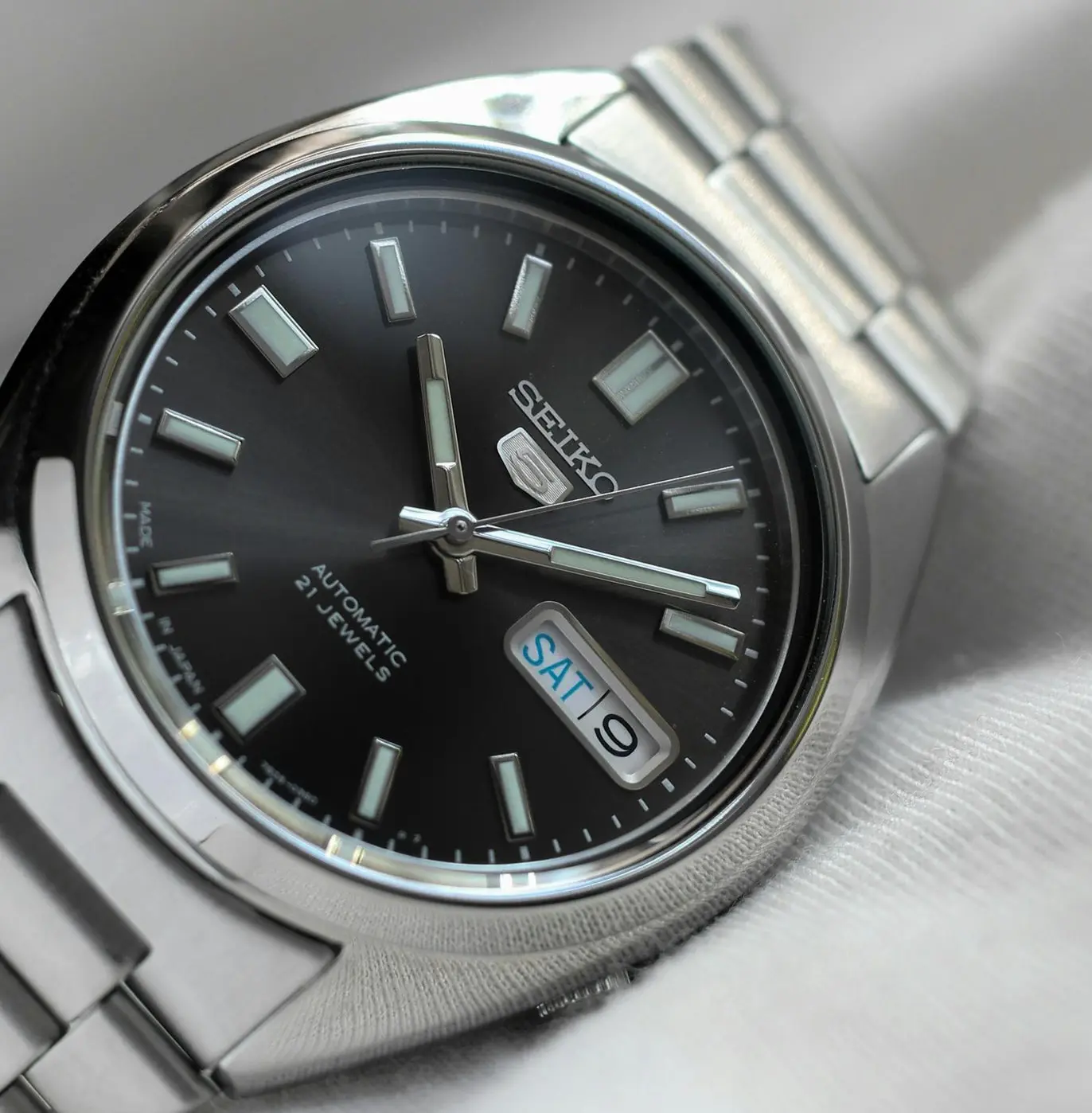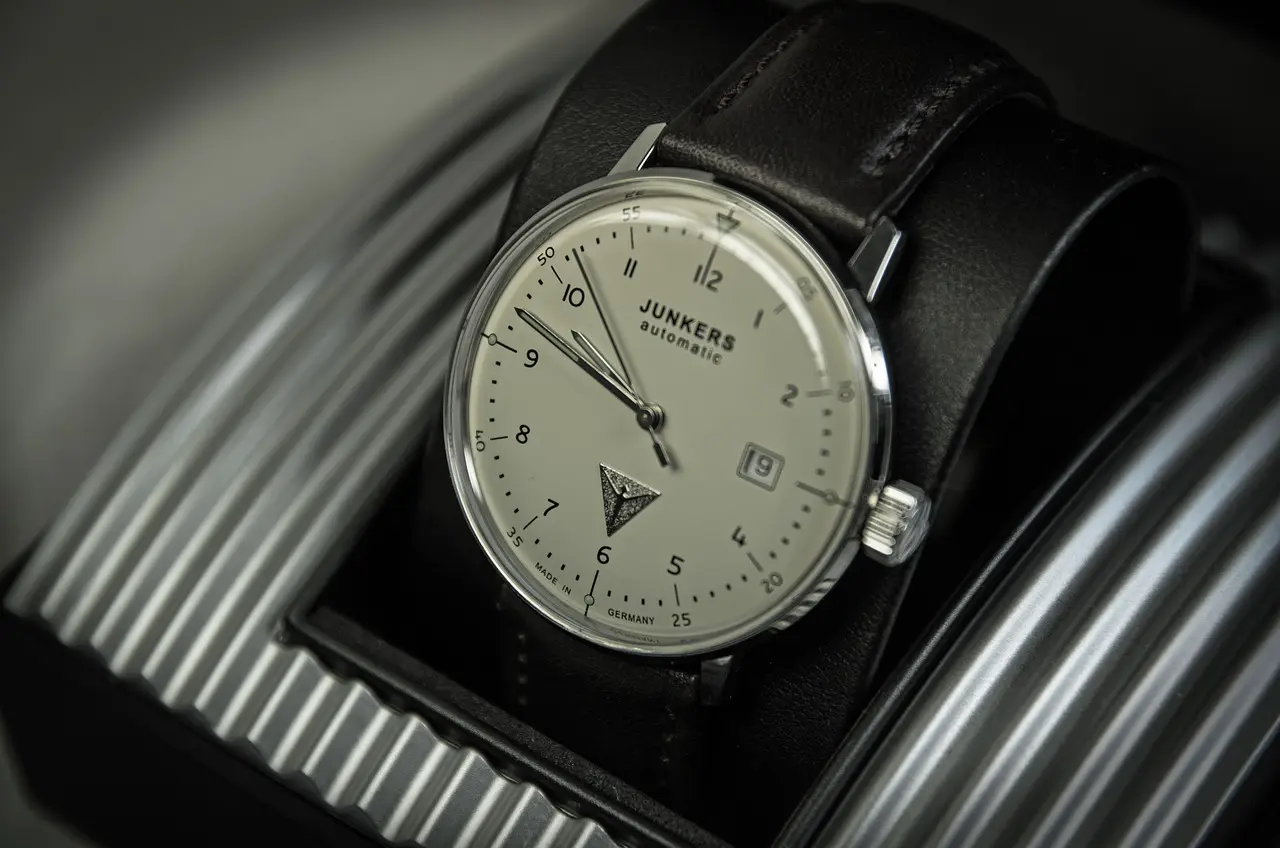A watch mainspring is a tiny piece of metal that contains a remarkable amount of power. It is the primary energy that helps your mechanical or automatic watch keep running. The knowledge of the functions will assist you in admiring the science, artistry, and materials that made your watch a masterpiece of accuracy.
What is a Watch Mainspring?
A mainspring of a watch is a coiled metal ribbon that is enclosed in a little drum known as the barrel. This spring is tightened up when you wind the watch. When it slowly unravels, it releases the energy stored within, driving the gears that move the hands and maintain precise time measurement.
It is this spring that beats your mechanical or automatic watch. In its absence, the whole watch would come to a standstill. The work of the mainspring is not difficult, but essential, to conserve and discharge the energy at a constant rate to keep your watch running every second of the day.
The duration of a watch's winding depends on the strength and quality of its mainspring. Due to the use of high-quality spring materials and precision in the engineering, expensive watches can take up to 40 hours or a few days to reach the next wind.
How Does a Watch Mainspring Work?
This begins with winding the watch. When you rotate the crown or the rotor (in automatic watches), the mainsprings (coils in the barrel) of the watch become tighter. This is the storage of mechanical tension.
The mainspring began to unravel gradually once wound. When it is unwound, it passes out the energy it has stored to the gear train, which turns the hands of your watch face. This energy is controlled by the escapement and balance wheel, making sure your watch does not run too slowly or too fast.
Each stroke of your watch is controlled by the discharge of energy from the mainspring. Such an optimal ratio between the stored energy and the released energy is what makes mechanical watches move in a soft and regular motion.
It is a simple and brilliant design, one coil of metal that moves hundreds of tiny components in complete harmony.
The Science Behind the Mainspring’s Power
Observe how mainsprings function according to the laws of physics, specifically tension, elasticity, and torque. Upon winding, the energy is stored as potential energy. That energy is converted into motion as it is unwound.
The secret of proper timekeeping is that the spring can release this energy in a balanced manner. When the torque (rotational/rotating force) reduces at an excessive rate, the watch will not run properly. This is why modern mainsprings are designed to deliver consistent power output, ensuring accuracy throughout.
Another significant role is played by elasticity. After each winding and unwinding process, the spring has to be returned to its original form. This capacity enables the mainspring of the watch to make thousands of motions over the years without failure.
The accuracy of the engineering guarantees that the mainspring has a power curve that is competent and stable - a scientific marvel that makes your watch work every day.
Materials Used in Modern Mainsprings
The present-day watch mainsprings are made of modern alloys that combine strength, flexibility, and wear resistance. These materials ensure the spring can store and return energy smoothly, maintaining its form for years after daily use. The appropriate alloy enables your watch to remain precise, durable, and resistant to environmental alterations.
The following is a closer examination of the most popular types of materials being used in the present-day quality mainsprings:
Materials | Features | Benefits |
Nivaflex | It is a nickel-based alloy that has cobalt, chromium, and iron. | Very elastic, rust- and corrosion-free and gives reliable power supply. |
Elinvar | Nickel-iron alloy evolved to be thermally stable. | Elastic to changes in temperature, thus minimizing timing errors |
Spron 510 / Alloy-20 | Luxury timepieces made of high-performance alloys. | Have longer power reserves, superior anti-magnetic characteristics, and increased strength. |
Hairspring Steel (Vintage) | Traditional carbon steel | Inexpensive and simple to manufacture, yet likely to rust, wear, and lose tension through time. |
Nivarox | Swiss movements commonly use an advanced non-magnetic alloy. | Provides constant output in response to magnetic and temperature variations. |
Modern innovation: Silicon-Based Alloys | Light and totally non-magnetic. | Very tough, slip-free and not affected by moisture or magnetism. |
All these materials provide a varying performance, price, and durability. Luxury and precision brands use alloys such as Spron 510 or Nivaflex, which are capable of retaining longer power reserves and are also flexible. These modern materials cause a significant difference in the efficiency with which a watch mainspring will work.
Vacuum heat treatment and micro-polishing are also part of modern production and serve to remove the impurities and make the mainspring surface perfectly smooth. This finish minimizes the friction within the inside and assists in keeping the flow of power fed to the escapement constant.
Simply put, the type and quality of your mainspring are what make the difference in the quality of your watch performance in terms of timekeeping and length of power supply, as well as its ability to resist the various daily damages. This is why state-of-the-art alloys have become the standard in both general and luxurious mechanical watches.
How Advanced Alloys Improves Watch Accuracy
The use of advanced alloys has helped in improving the accuracy and durability of watches made by modern watchmakers. These highly designed materials are used in order to keep the tension constant within the mainspring, and this eventually results in a constant supply of energy to the escapement. This ensures that your watch keeps time more accurately, even in varying temperatures and daily excessive movements on the wrist.
Compared to carbon steels, which are prone to fatigue, the alloys like Nivaflex and Spron 510 have greater elasticity and are resistant to magnetism. This translates to your watch staying in time longer and needing fewer adjustments over time; this is obviously an advantage in the current precision-oriented horology.
The Role of Lubrication in Mainspring Performance
What you may not have realized is that lubrication plays a crucial role in ensuring your watch mainspring operates smoothly. The metal is covered with a layer of special oil to minimize friction during the coiling and uncoiling process of the springs.
When the lubrication evaporates, the mainspring may stick or "slip," resulting in uneven delivery of power. This is the reason why frequent servicing makes the spring elastic and effective. The lubrication also prevents corrosion of the surface of the mainspring, which increases the lifetime of the mainspring.
How the Watch Mainspring Stores Energy
The task of the mainspring is to store potential energy when it is on the reel and to put the energy back slowly. As you turn on the crown or the movement of the automatic rotor, the spring tightens. It delivers power to the hands on the dial as it unwinds by passing through a sequence of gears, the gear train, which ultimately drives the dial hands.
It is pure mechanical sophistication. The accuracy is a product of the uniformity of the spring unloading. In case of uneven release of power, your watch can either run slowly or quickly. This is why current-day automatic watches have a slipping bridle - to prevent overwinding and ensure the bridle delivers optimal tension.

Manual vs. Automatic Mainsprings
Both the manual watches and the automatic watches both depend on the watch mainspring, the difference is in the way the spring is wound.
The mainspring of a hand watch is tightened by twisting the crown using your fingers. It will gradually unwind itself over time when you are wearing the watch, and when a watch requires a fresh wind, it needs another wind. With manual winding, you have the control and attachment to your timepiece.
With an automatic watch, a rotor is a small metal weight that spins with the movement of the wrist. This movement also spins the watch mainspring automatically. It does not require any physical effort to keep the watch wound as long as it is put on regularly.
The task of automatic mainsprings is to work with continual micro-windings during the day, whereas manual ones are optimized to work with full and consistent windings.
- The benefits of manual mainspring include: minimal moving components, fewer moving parts, and emotional attachment.
- The benefits of the automatic mainspring include convenience, reliable power, and advanced engineering.
Both styles bring accuracy and elegance, which is guided by the same strong spring at the heart of it.
Common Mainspring Problems and Maintenance Tips
Although a watch mainspring is made to last several years, it may break down. Such frequent issues include overwinding, slipping, metal fatigue, and breakage.
When one of the mainsprings comes, your watch will cease to operate altogether. When it slips, it could be erratic or time-wasting. Major power and precision are lessened by a weak or tired mainspring.
This is the way you can take care of your watch:
- Get it serviced by professionals every 3-5 years.
- It should not be subjected to strong magnetic fields.
- Incidentally, keep your manual watch on.
- Have it clean and dry always.
When well cared for, your watch mainspring will be strong, reliable, and will be able to propel your timepiece for several years.
The Future of Watch Mainspring: Innovation & Technology
The watch mainspring continues to improve with advancements in technology. The use of modern materials such as silicon and synthetic alloys is changing the performance of watches. These new mainsprings are not easily magnetized, generate less friction, and last a lot longer compared to the traditional steel mainsprings.
Other luxury brands are testing nanotechnology and composite materials to develop springs that can store more energy in a smaller area. This translates to extended power backup capacity - up to over 10 days- and the same size.
Smartwatches require batteries, while mechanical watches still demand the time-honored beauty of the watch mainspring. The combination of the old and new continues to make the art of watchmaking exist in order to provide performance and classiness to collectors and enthusiasts.
The future is bright on this little piece of metal, which is still driving the heart of the best timepieces on earth.
Conclusion
A mainspring of the watch is not a mere piece of metal. It is what makes any kind of mechanical watch tick, regardless of the motion or winding you apply. It has been enhanced over the years by innovation, making it stronger, efficient, and beautifully reliable.
We have honored this masterpiece of engineering by providing watches that are designed to have timeless designs and are precise in terms of time at LEITZEIT. Our watches pay tribute to the science of the mainspring - constructed to be durable and made to suit the lover of the real mechanical beauty. Discover our brand and have time fueled by accuracy.
Find the watch that fits your style like a glove, thanks to our innovation and zeal.
Quick FAQ
What is the work of a watch mainspring?
It retains mechanical energy and discharges it gradually to make the movement.
Is it possible that the mainspring of a watch can lose tension?
Wear and fatigue may decrease power reserve, and so it must be replaced.
How many years is the average life of a mainspring?
5-10 years average use and maintenance.
How do you compare a mainspring (manual) and an automatic?
The manual has to be wound by hand, the automatic does it itself through the movement of the watch's wrist.
What makes you know when the mainspring of a watch is broken?
When the watch suddenly stops or the watch fails to hold onto a wind, it is possible to damage the mainspring.